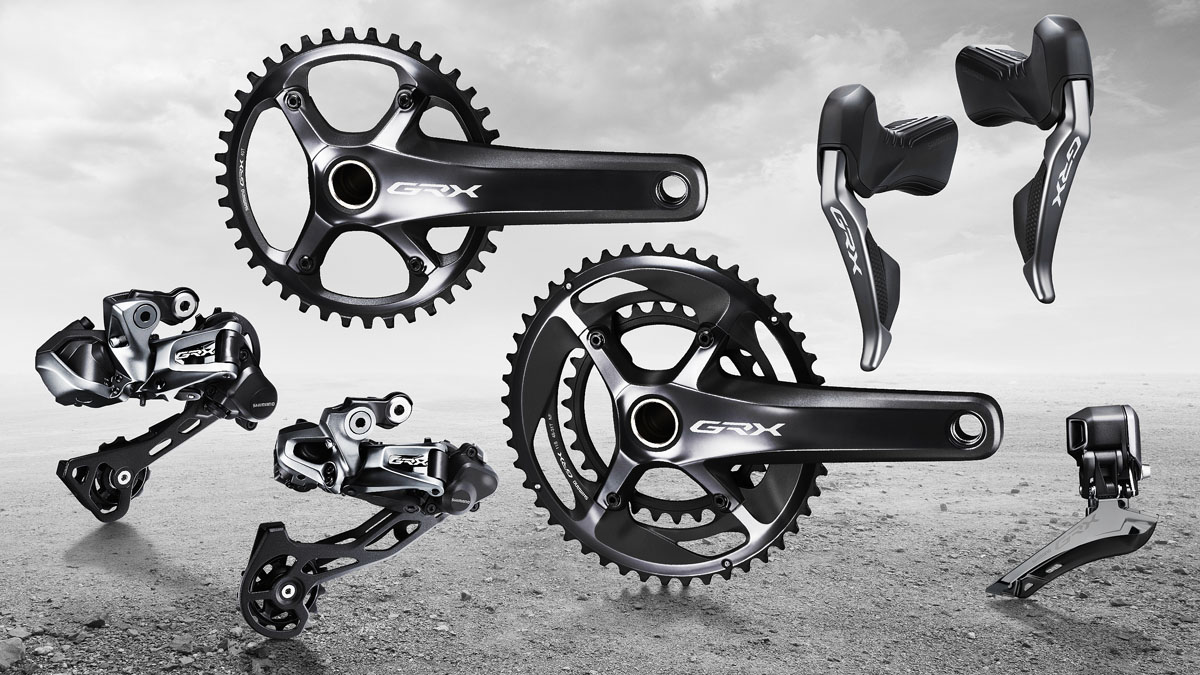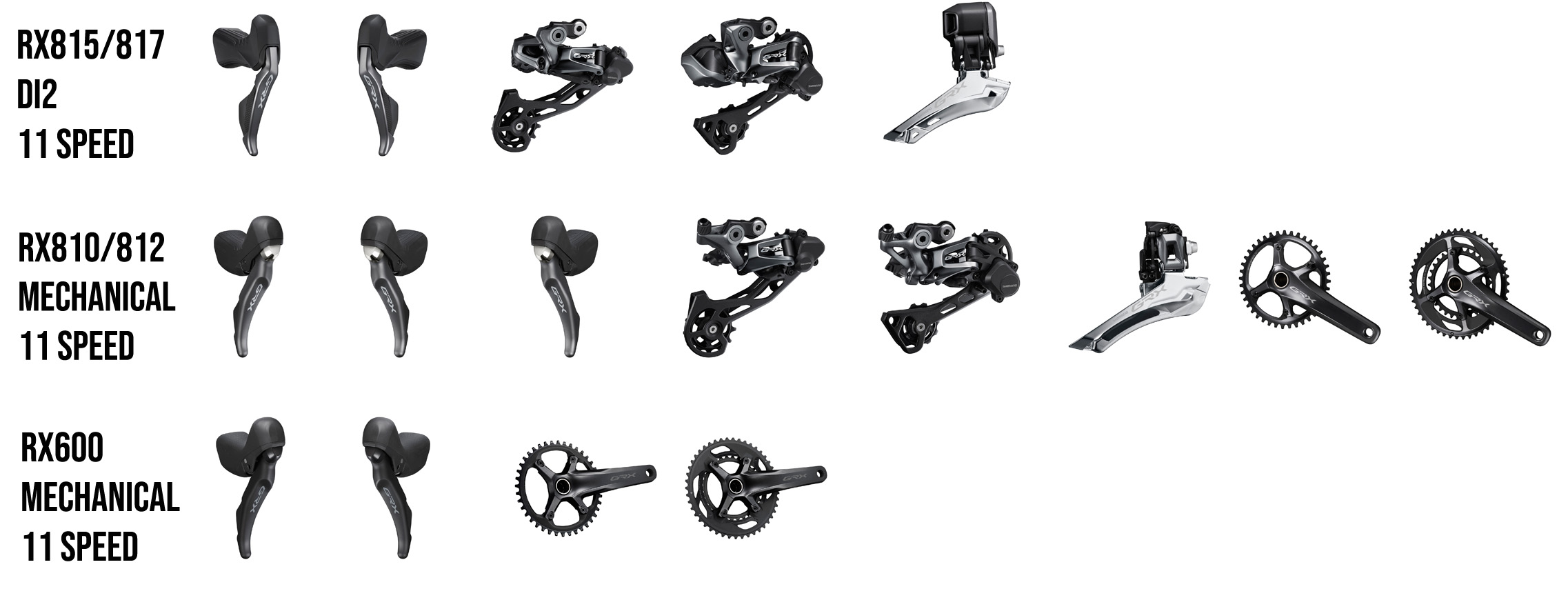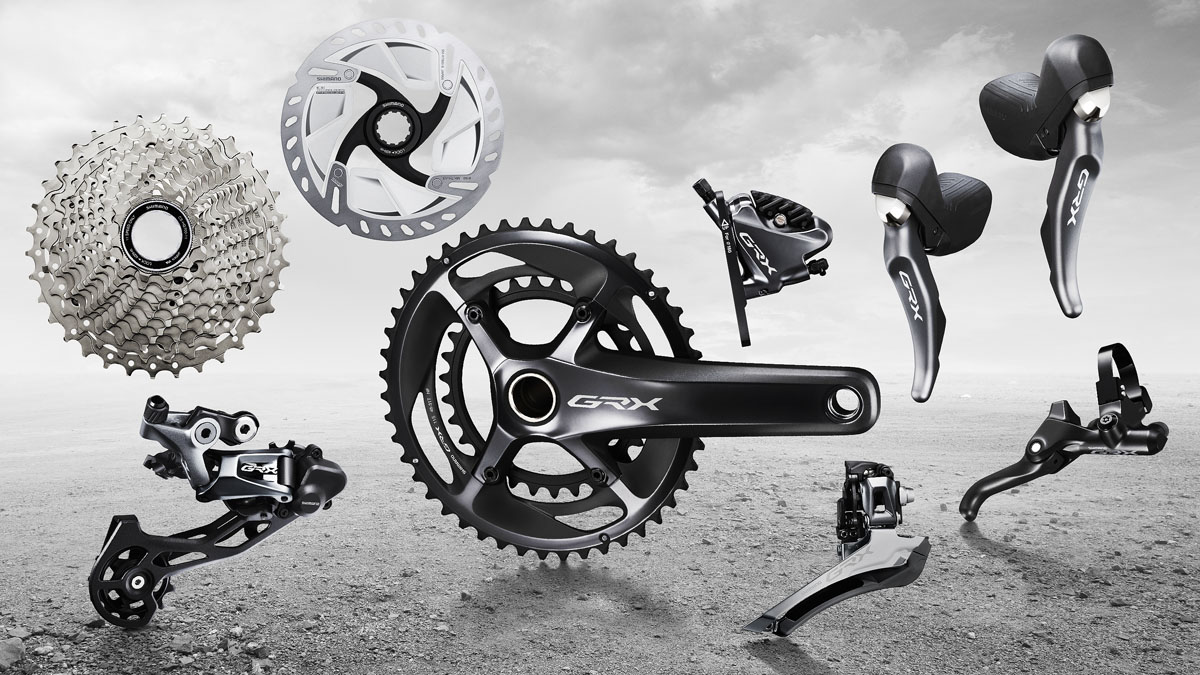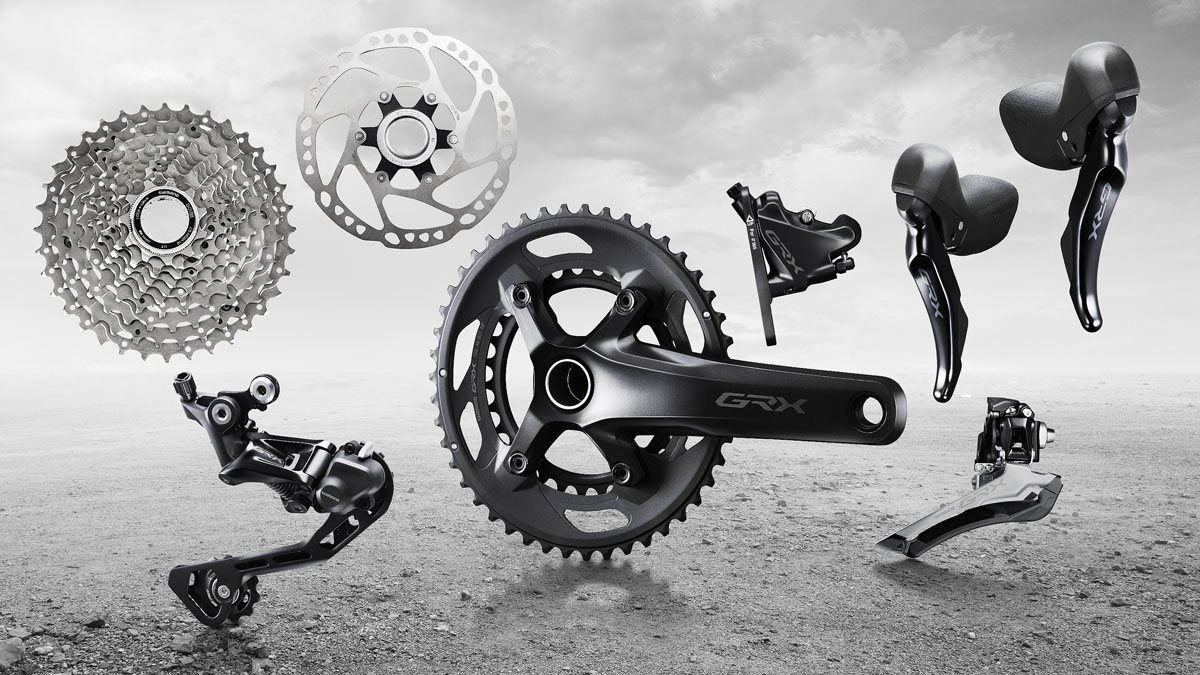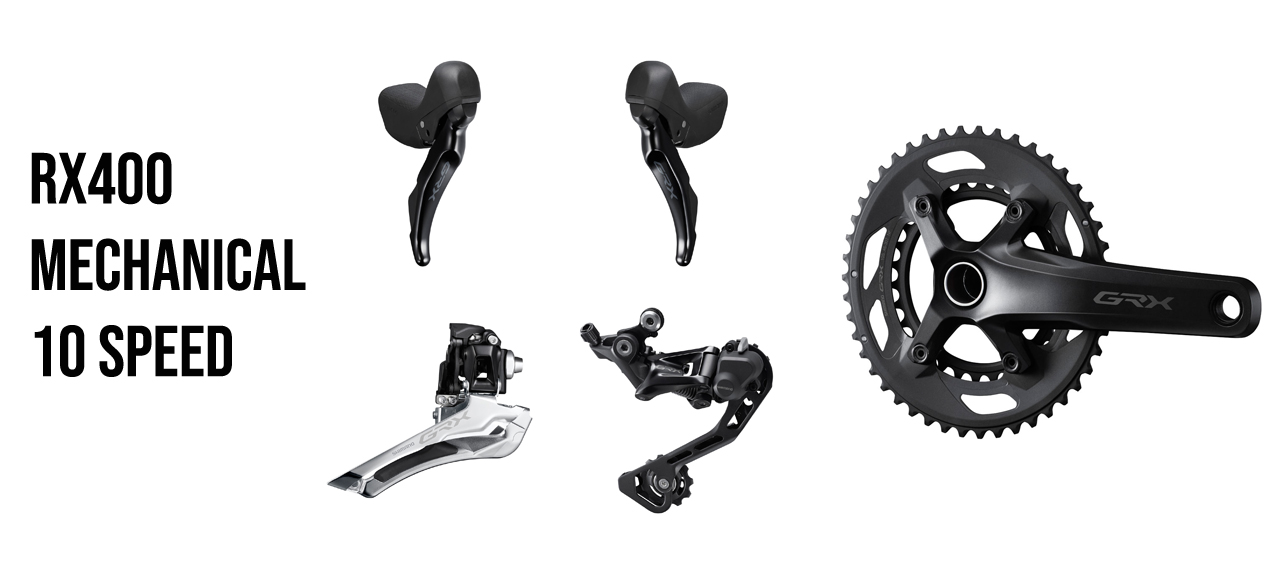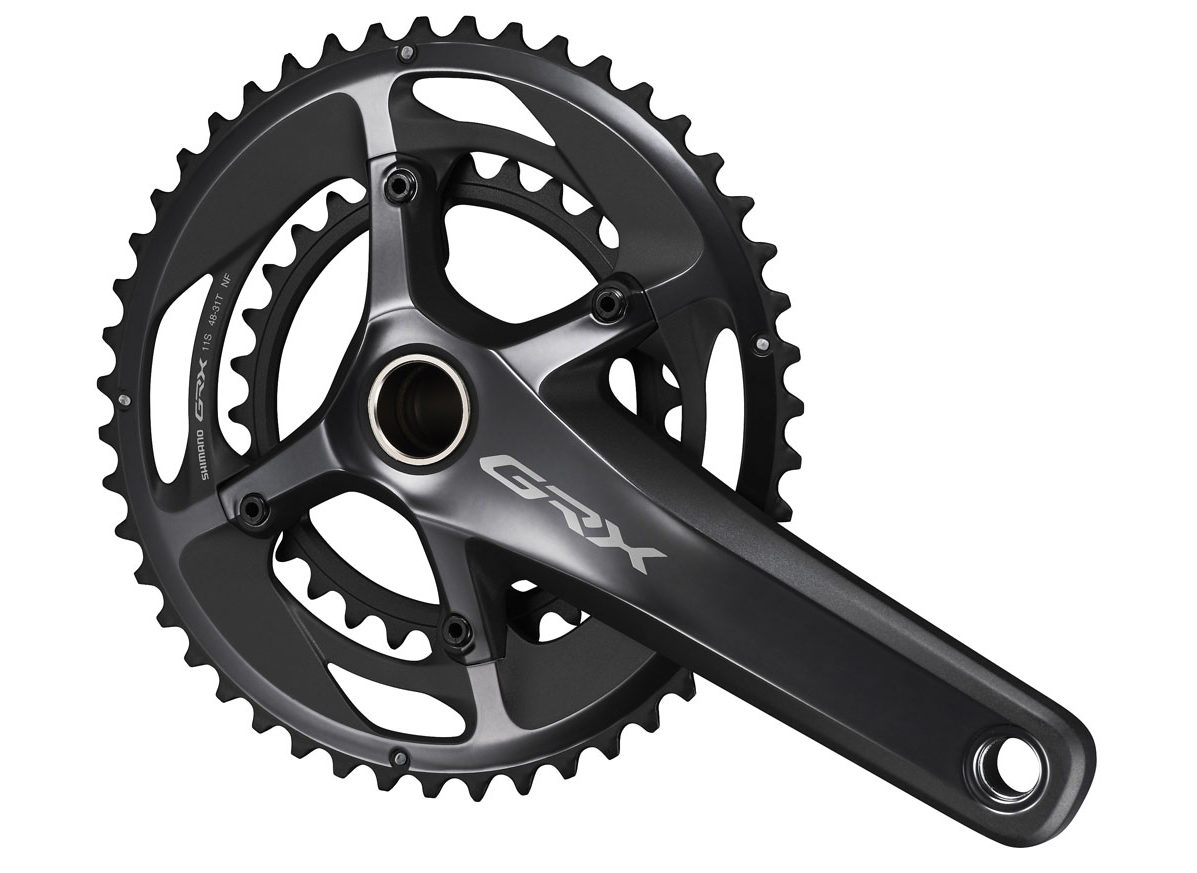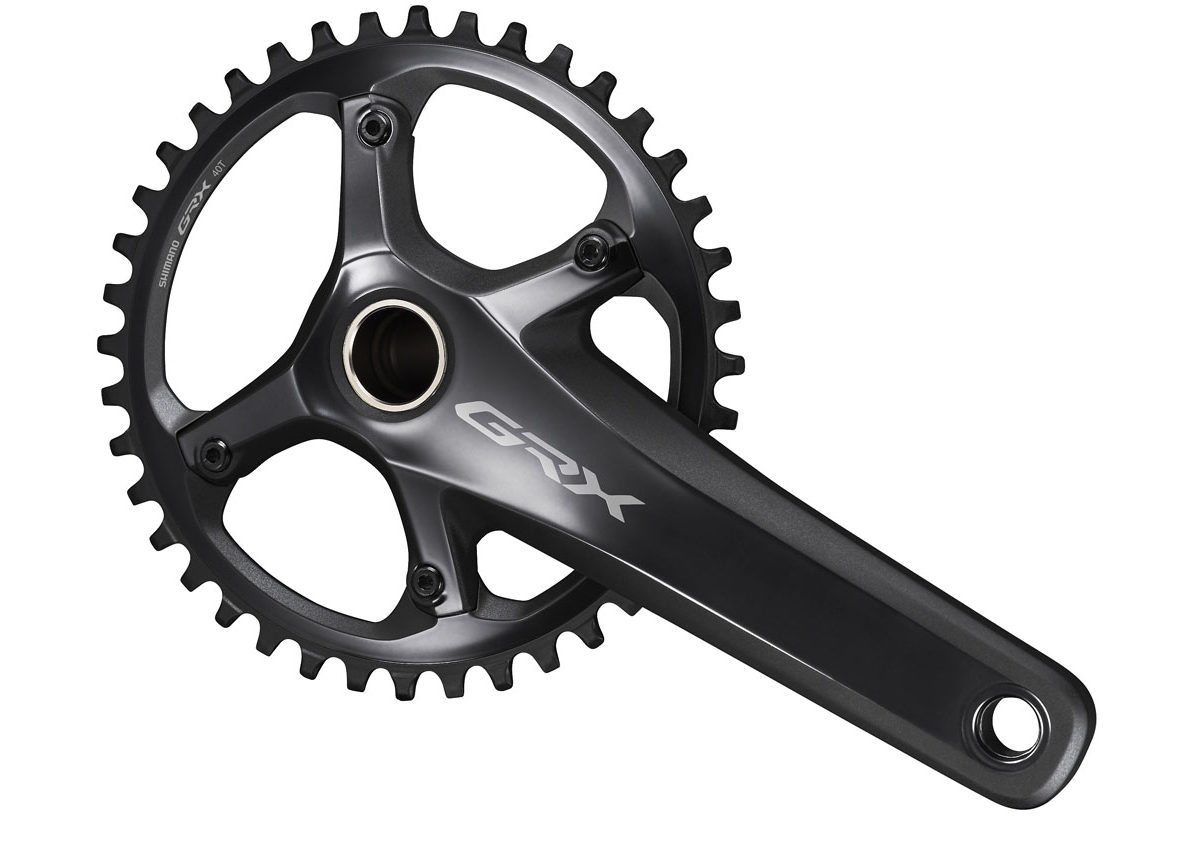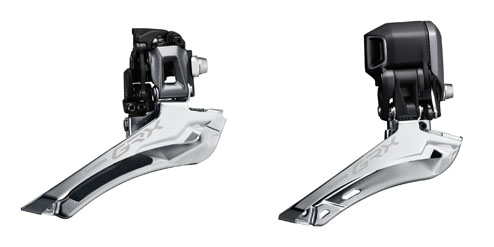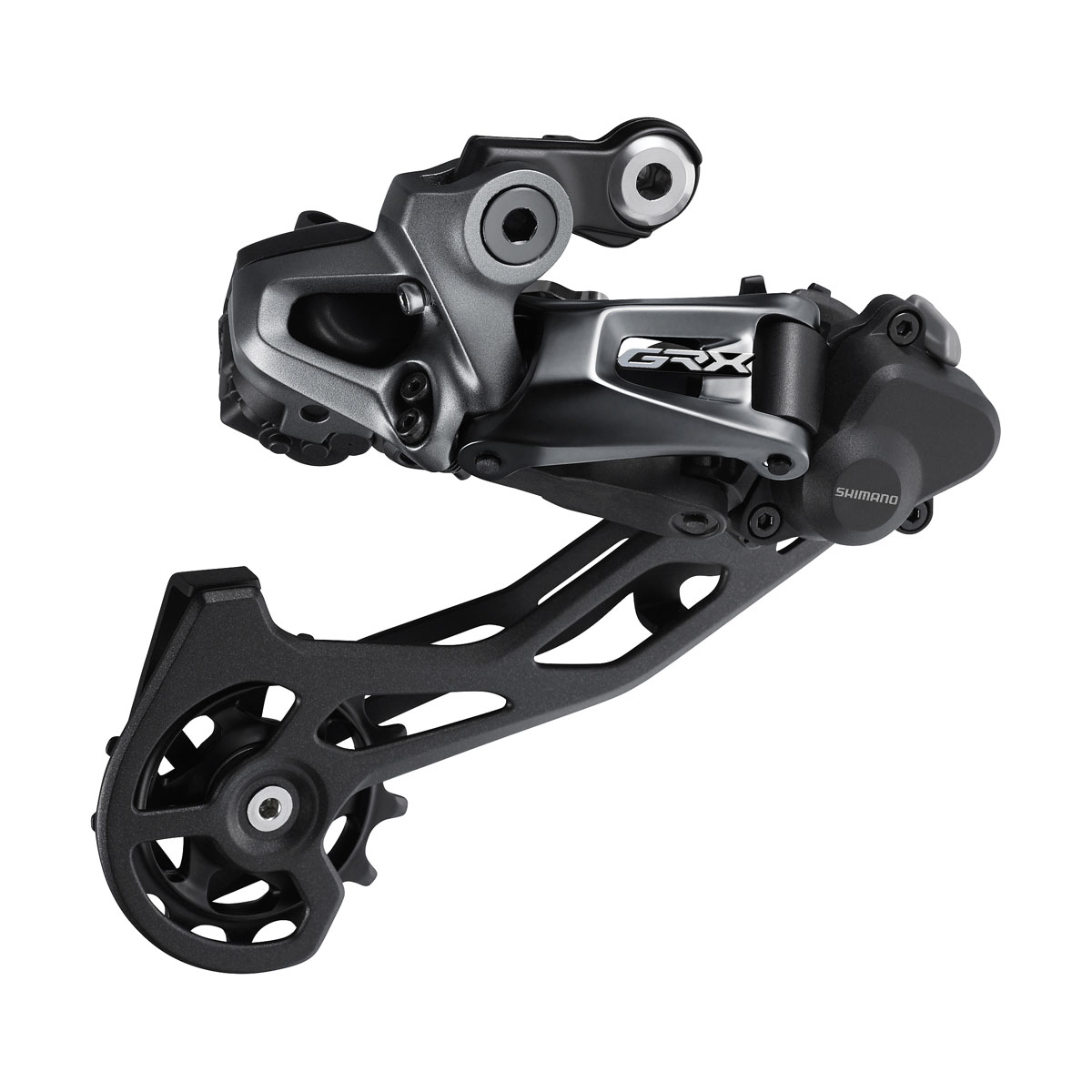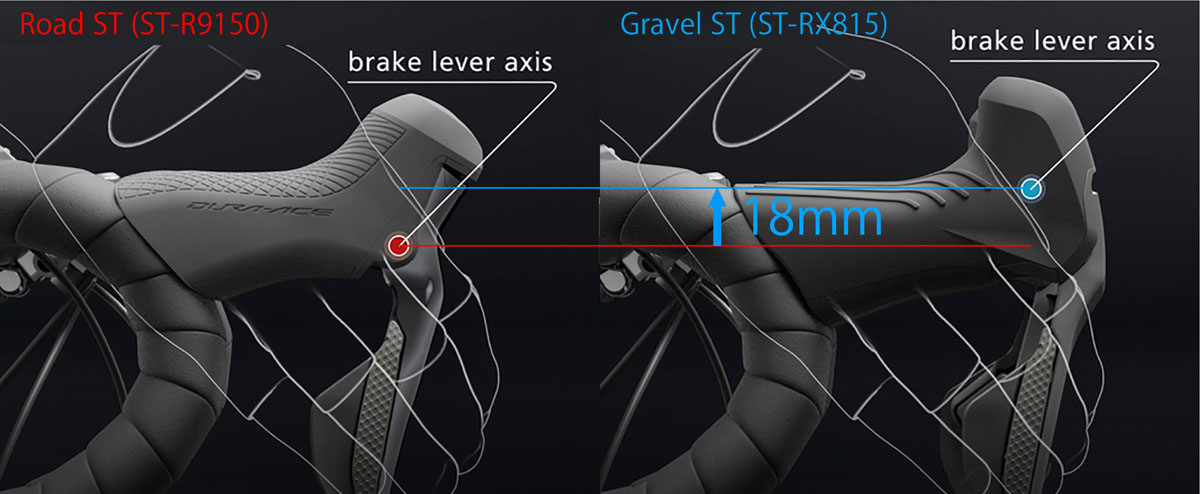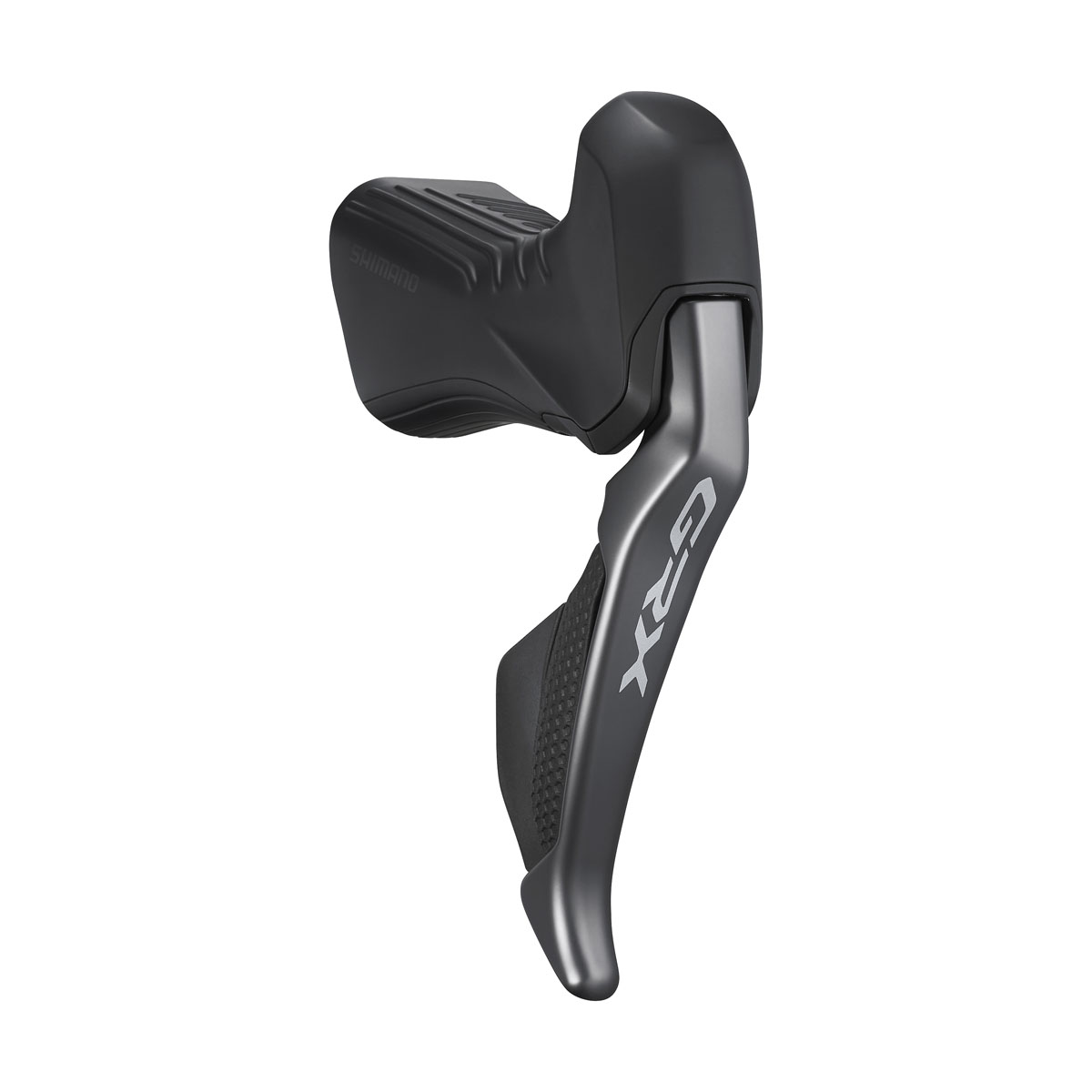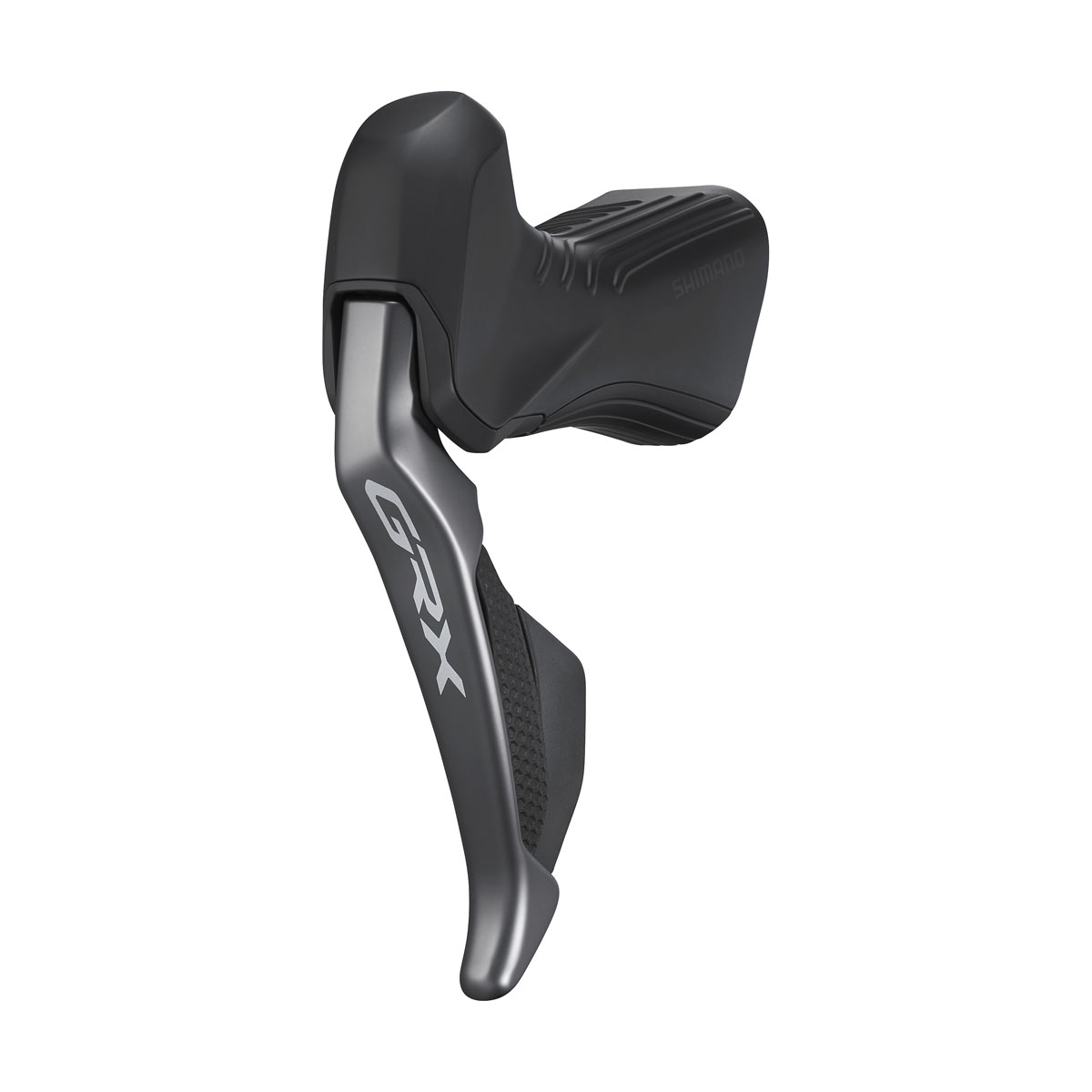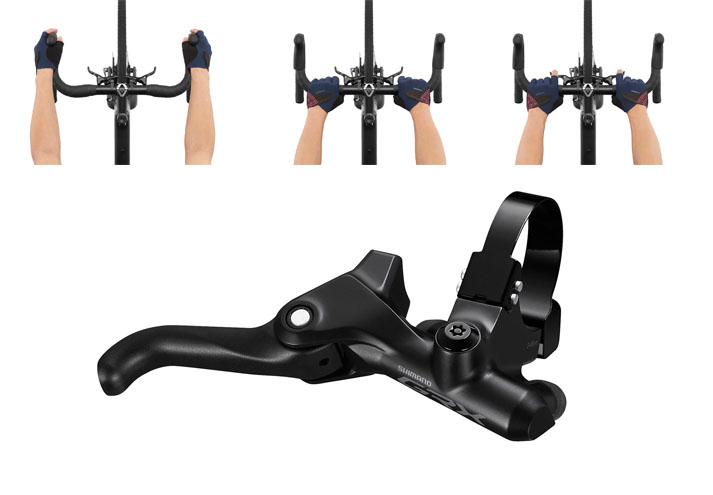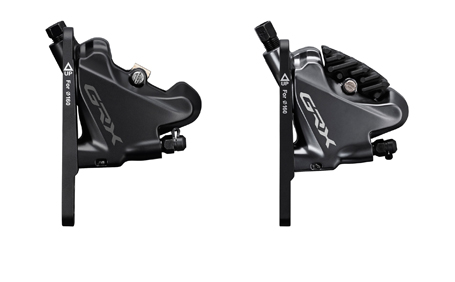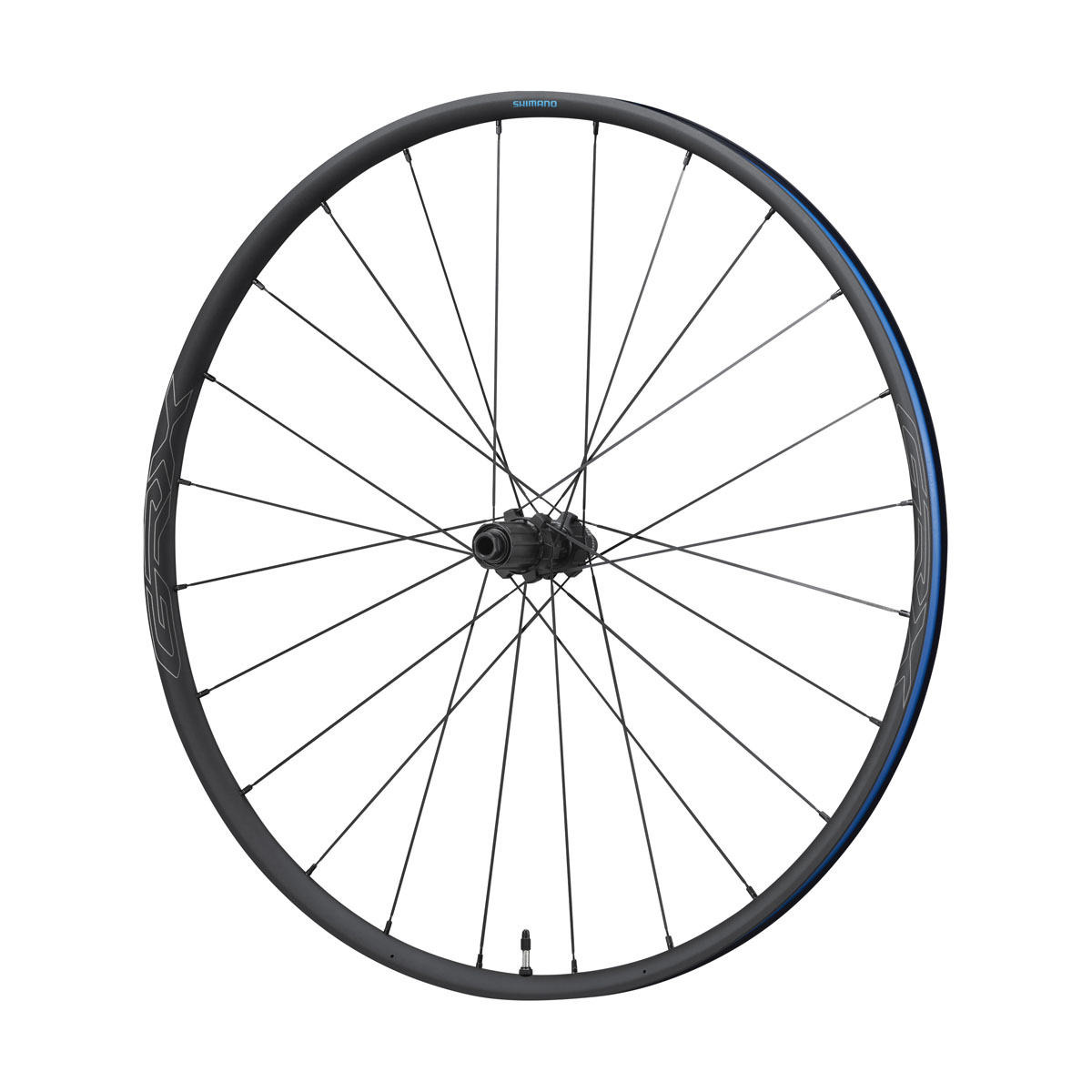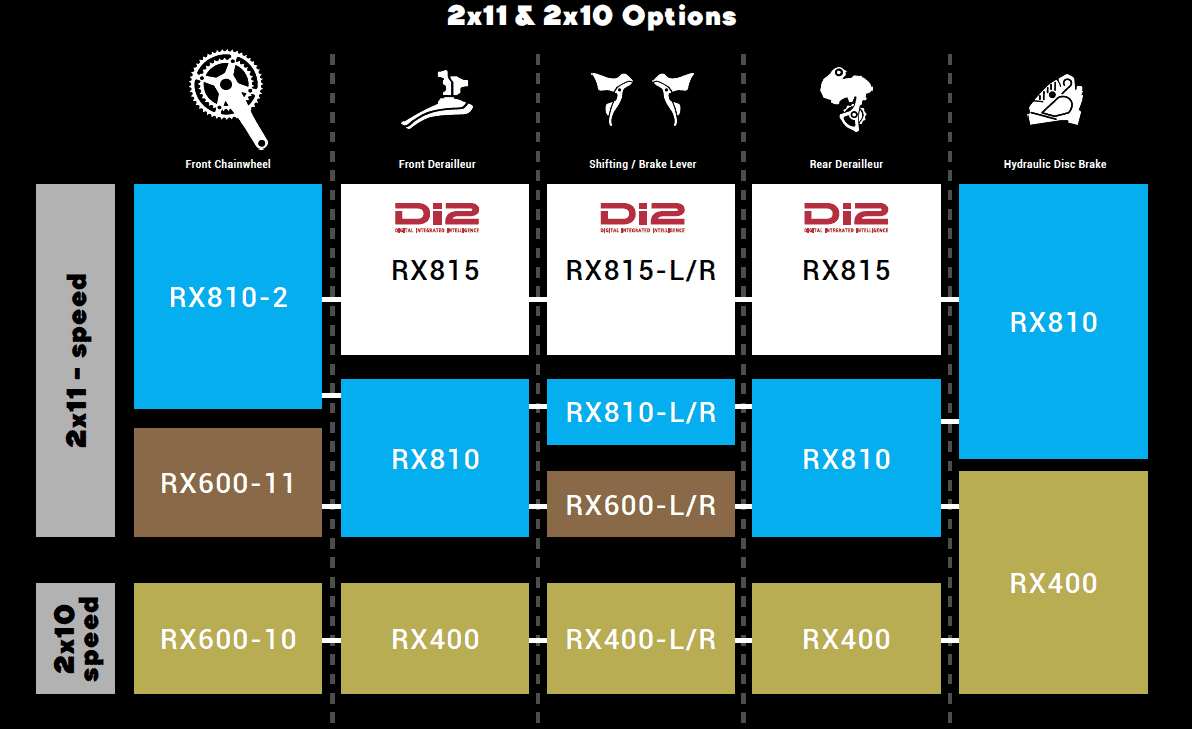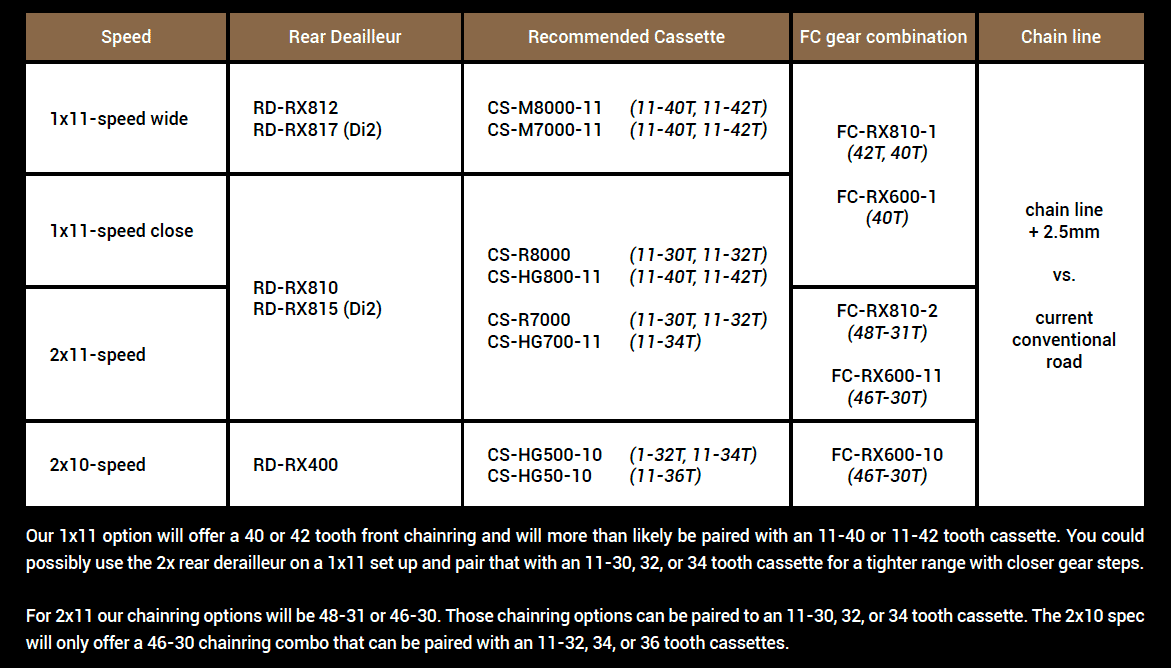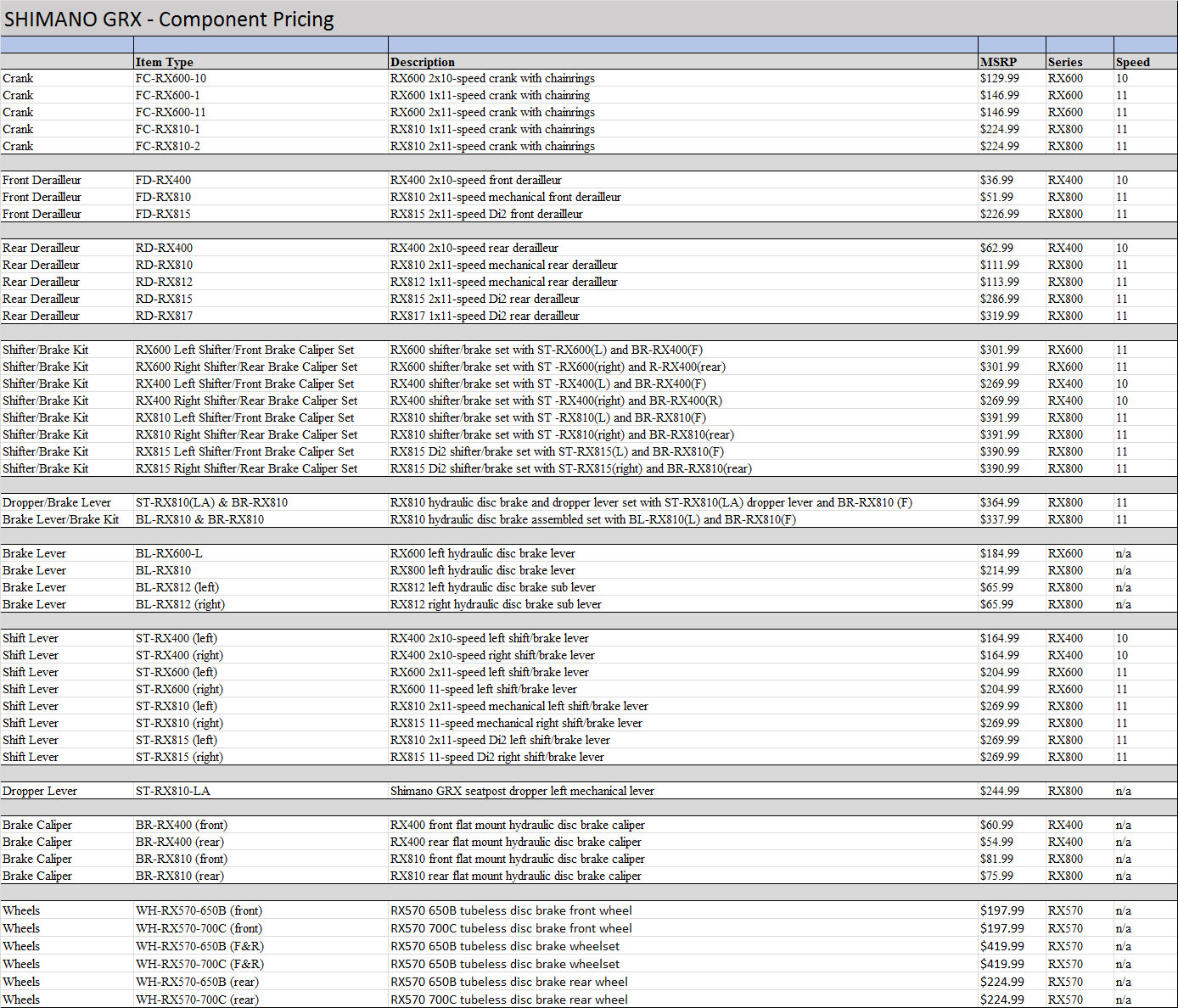Gravel is big right now. Really big. Everyone’s jumping in, and more are coming all the time. With one glaring ommission: Shimano.
Now, after years of secret research and development, Shimano is joining in on the gravel party in a big way. More than just additions to current product families, the have an entirely new GRX category of products solely focused on gravel riding and racing.
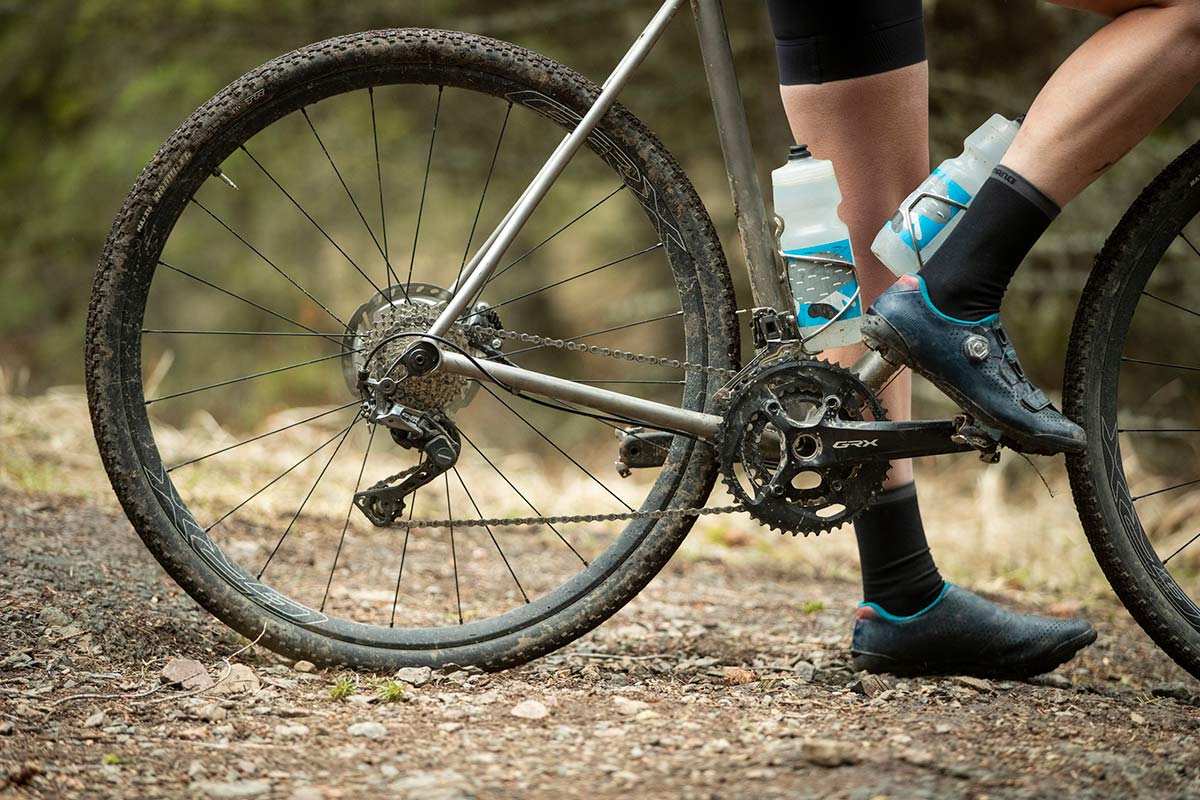
Why wait so long, Shimano?
Citing a “multi-year global market study” in their press release, Shimano’s Road Project Manager Dave Lawrence said that the gravel trend was first brought to the attention of their global product team in 2014. But it wasn’t until 2016 when they brought their whole product team (designers, engineers, project managers) to Kansas that the pieces really started to come together. Shimano noticed that riders were looking for more versatile bikes overall and often started their “gravel” journey on cyclocross bikes. The new GRX family offers the ability for riders to “gravel your way,” with 1x and 2x specific gravel gearing and compatibility with existing products.
So why introduce a completely new family dedicated to gravel? As Shimano Road Brand Manager Nick Legan puts it, “Shimano isn’t asking gravel riders to repurpose road components. We can’t make the best road group also be the best gravel group. The riding is too different.” Instead, the GRX group is positioned as an adjacent group of components to their road offerings that just so happens to have the ability to mix and match.
OK, but why stick with 11 speeds?
A gravel-centric group is a great idea, but why 11 speed at a time when everyone is going to 12? Again, Legan said it was Shimano’s position that there is a lot more that can be accomplished with 11 speed drivetrains than others are willing to try. Not only that, but retaining the ability to run existing cassettes and chains means there is no need for new hubs, freehubs, and many of the parts will work with current road components making it a lot easier to upgrade your current bike to perform better off road and on gravel. It also meant that Shimano can get everything to market sooner with mechanical groups expected in June/July, and Di2 groups expected in August.
Drivetrain Options: 10 & 11 speed, mechanical & Di2, 1x & 2x
There is a lot to unpack when it comes to the entire GRX family of drivetrains. Technically there are four different tiers of products with unique attributes that make for a dizzying product matrix. Best to think of it as an RX8xx level that’s Ultegra equivalent, and an RX6xx level that’s on par with 105.
At the top end is the 11-speed RX815/817 Di2 group with hydraulic brakes. Available in 1x or 2x configurations, there are two different rear derailleurs:
- The RD-RX815 for 2x groups has a longer cage and the ability to handle the longer chain wrap span that a double chainring setup requires to get through all the gear combos.
- The RD-RX817 for 1x groups has a larger maximum cassette range to handle a wide-range cassette with a 40-42t max cog size.
Technically, you could run the 2x rear derailleur in a 1x system, but you’d have to stick with the narrower range cassettes because of where the upper pulley wheel is located and how it articulates away from the cassette. So, if you have a really flat course and want smaller gear steps, you could swap your 2x to a 1x for the day.
Next down the line is the 11-speed RX810/812 mechanical groups, also with hydraulic braking. There are also two rear derailleurs here for the same reason – RX810 for doubles, and RX812 for 1x.
At the 105-level is the RX600 groups which are essentially the same as the RX810/812 group with 11-speed mechanical shifting and hydraulic braking, but is slightly heavier and therefor a bit less expensive.
Finally, the RX400 group takes many similar features and packages them into a 10-speed group with mechanical shifting and hydraulic brakes. The drivetrain is based around a 2×10 configuration using the RX600 crankset with a 46-30t layout, but additional materials changes are made to save costs.
Yes, GRX will work with current Shimano groups
While it’s not often the case with new groups, GRX components are blessedly cross compatible with current road components of the same speed. For example the 11-speed GRX shifters would work with a current Ultegra rear derailleur, or vice versa. You do have to be careful about front derailleur and crankset compatibility though – GRX uses a +2.5mm chainline, so Shimano says you need to run the GRX front derailleurs with GRX cranksets, and road front derailleurs with road cranksets.
As mentioned, the groups all use current cassettes and chains, so the 11-speed GRX components can be used with any 11-speed Shimano road cassette and chain, and the 10 speed GRX components can be used with any 10 speed Shimano road cassette and chain. Cranksets are also cross compatible, but one of the biggest “gravel specific” features here is the new gearing options up front.
Gravel Specific Gearing
In terms of gearing, Shimano found that riders were mostly happy with the high gearing most groups offered, but almost everyone wanted the option of lower gearing as well. To get there, they created a 2x crankset with the largest delta in chainring size they’ve ever offered – a 17 teeth gap. That makes a 48-31t crankset possible when used with their new front derailleurs that can handle the increased range.
When paired with an existing 11 speed Shimano 11-34t road cassette, the resulting 31-34t combination is well below one to one. But you also get to keep the 48-11t combination for descents or those days with the perfect tailwind.
While the higher end RX810-2 crankset will only be offered in 48-31t, the RX600-11 will be available in an even lower 46-30t combination. This makes a 30-34t low gear possible for even more of a bailout gear. Only the RX810 series cranks make use of Shimano’s Hollowtech II construction though, so the RX600 cranks are a bit heavier – 816g vs 722g. RX810 cranks will be sold in 170, 172.5, and 175mm crank lengths, while the RX600 gains an additional 165mm length.
Both the RX810 and the RX600 will also be available in 1x configurations with a single 40t chainring (RX810 also has a 42t option). When used as a 1x configuration with the GRX rear derailleurs, you’ll have the option of running an 11-40 or 11-42t cassette out back.
These use the same crank arm for either 1x or 2x configurations so they can be converted to the other option in the future, and they use a 110mm asymmetric BCD for the outer ring, and 80mm BCD for the inner.
The RX600-10 is nearly identical to the RX600-11 with the same gearing, lengths, and specs, just with 10 speed specific chainrings.
Front Derailleurs
Due to the 17-tooth delta of the RX810 cranks, you’ll need a derailleur that will handle the range. And one that has the right chainline. All GRX cranksets use a new +2.5mm chainline so you’ll need one of the GRX front derailleurs to go with it. The RX815 is an 11-speed Di2 front derailleur with a 17t capacity that weighs 131g. For 11-speed mechanical, the RX810 is the answer with a 94g weight. And the RX400 front derailleur has a 16t total capacity and 95g weight for the 10-speed unit.
 Rear Derailleurs
Rear Derailleurs
As mentioned, you’ll need a specific rear derailleur depending on whether you’re running a 1x or 2x setup, so each 11-speed tier has two options – two Di2 rear derailleurs, and two mechanical. The fifth option is the RX400 rear derailleur for the 2×10 speed group with a max cassette range of 11-30 to 11-36t, and max front chainring range of 16t with a 41t total capacity. All of the new rear derailleurs use Shimano’s Shadow RD+ design with an adjustable clutch to increase chain retention.
RD-RX815/RD-RX817 (Di2)
- SHIMANO SHADOW RD+ stabilization
- Compatible with existing Di2 DUAL CONTROL levers
- Max. cassette range:
• RX815 (11-30 to 11-34)
• RX817 (11-40 to 11-42) - Max. front chainring range: 17T (RX815 only)
- 288/322 g
RD-RX810/RD-RX812 (Mechanical)
- SHIMANO SHADOW RD+ stabilization
- Compatible with existing 11-speed mechanical DUAL CONTROL levers
- Max. cassette range:
• RX810 (11-30 to 11-34)
• RX812 (11-40 to 11-42) - Max. front chainring range: 17T (RX810 only)
- 251/264 g
RD-RX400 (Mechanical 2×10)
- SHIMANO SHADOW RD+ stabilization
- Compatible with existing 10-speed mechanical DUAL CONTROL levers
- Max. cassette range: (11-30 to 11-36)
- Max. front chainring range: 16T
What about the original Ultegra RX?
The RD-RX800 (mech) and RD-RX805 (Di2) will remain in the line as a more all-road option that complements the current Ultegra road group and sized to work with standard road cassettes. Why? Because options, people.
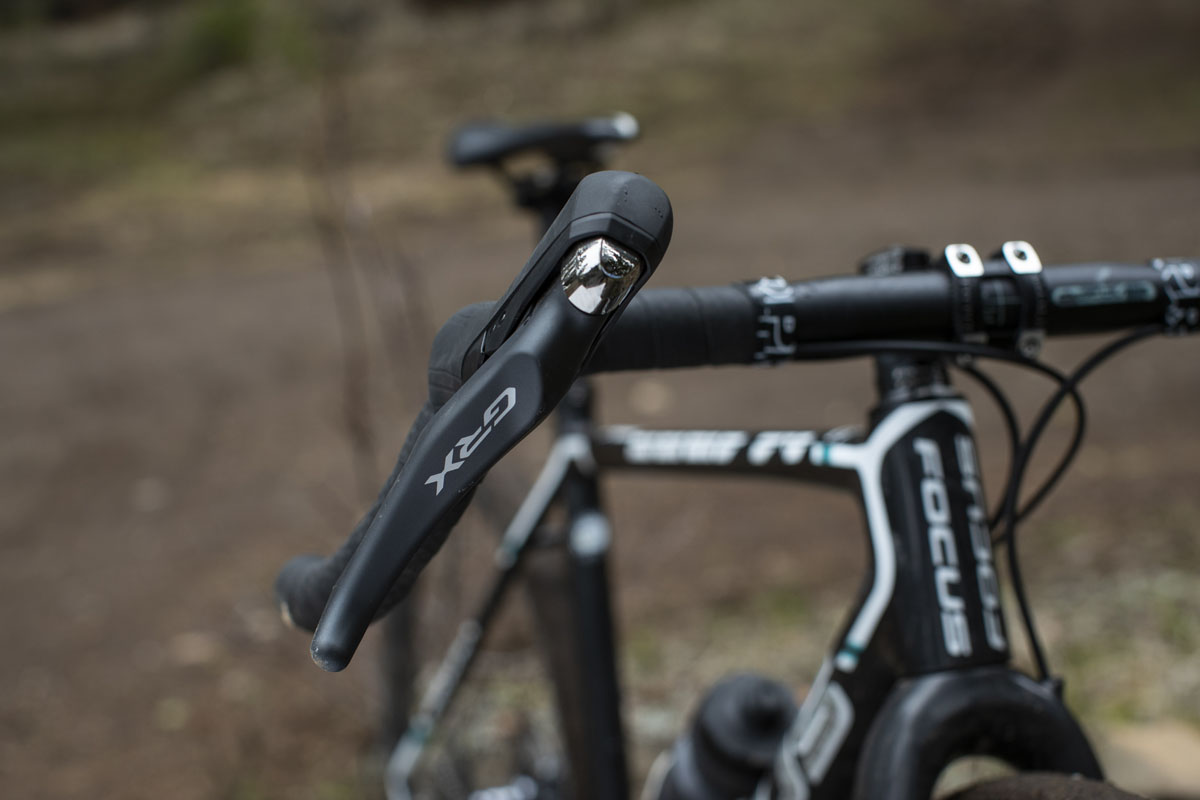
Dual Control Levers
Up front, the Dual Control levers are another area that Shimano has worked to integrate a gravel specific design. These levers not only feature new shapes, but new anti slip texture on the hoods and brake lever blades. And for Di2, there’s a revised brake lever axis for better braking from the hoods. Ergonomics were a big part of the GRX development especially since there are different riding styles that Shimano was trying to design around.
The top-level ST-RX815 Di2 levers raise the brake lever axis by 18mm, putting the pivot point at a spot that makes it easier to pull the lever while riding in the hoods and maintaining a secure grip in adverse conditions.
The Di2 GRX RX815 levers seem to be the most radically shaped levers in the bunch with a taller hood and extra thumb notch. They also stick to the standard Di2 button layout, even for 1x builds, so you can program it however you want. And they have additional buttons that you can program as shifters or to cycle through the pages on a paired cycling computer.
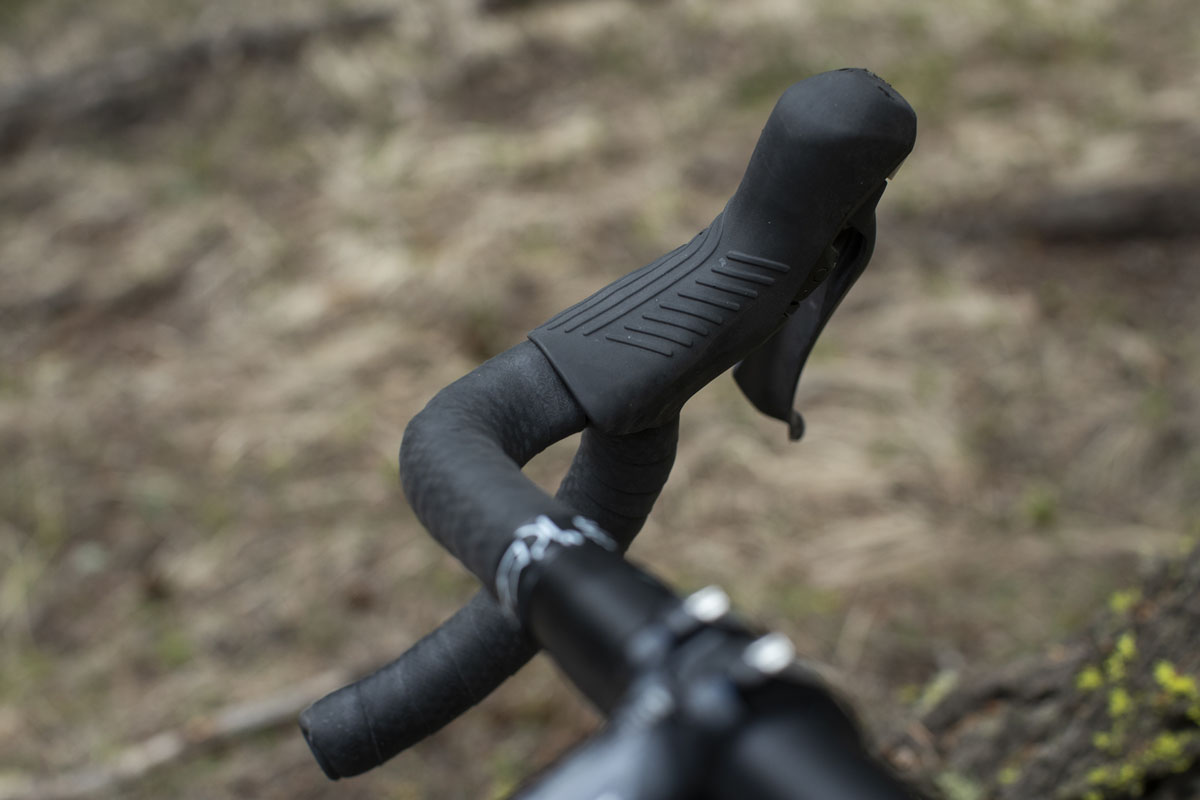
The other lever options keep the same (current) mechanical/hydraulic hood body and pivot placement, so you’ve gotta go Di2 if you want the improved braking ergonomics. But, all of the GRX levers get new hood covers with large ridges on the brake hoods for improved grip.
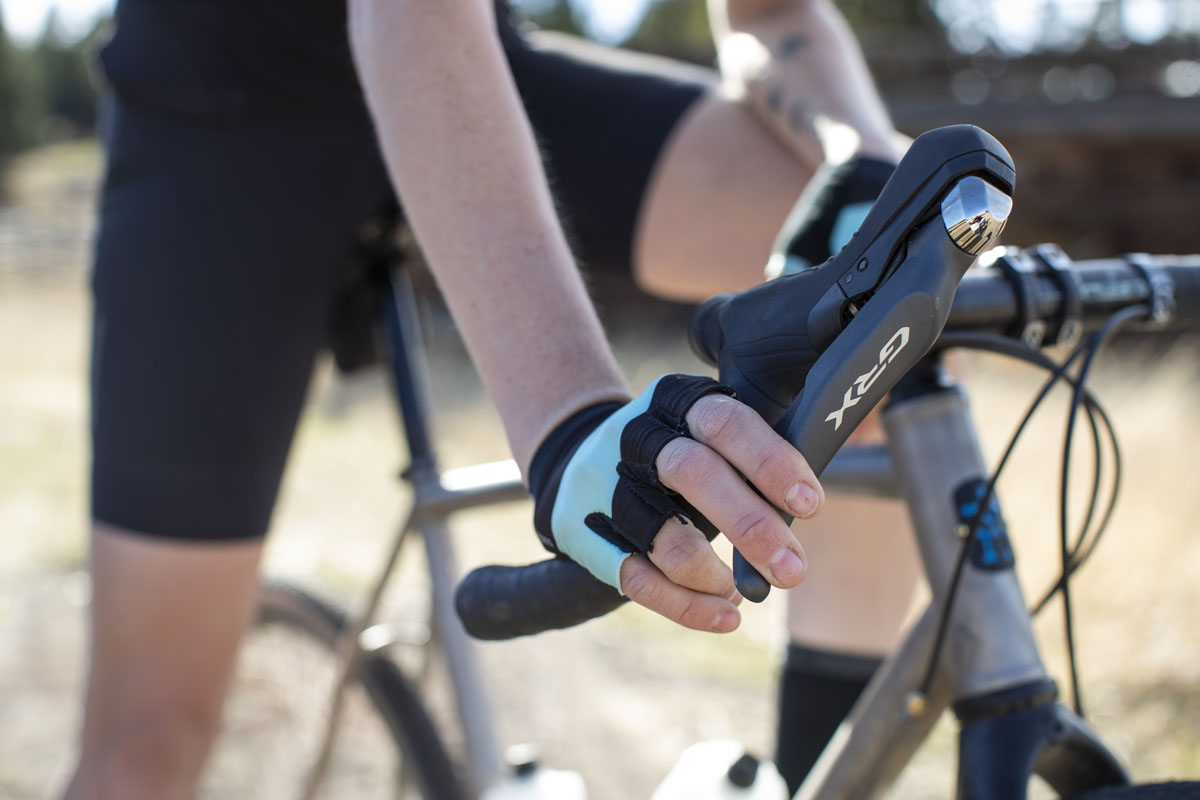
The mechanical levers share the same new shaping, but do not get the revised lever pivot placement (update: we previously wrote that they did have the new pivot location, which was incorrect). The RX810 will actually be offered in three different left shifter models with one for 2×11 set ups, one strictly for 1×11 with hydraulic brake operation only, and the RX810-LA for a 1×11 set up with the ability to use the shift lever for controlling a dropper post. The RX600 is a 2×11 set up with the same gravel inspired ergonomics and textured lever for added grip.
Hydraulic Cross Top Brake Lever Option!
One of the more interesting additions to the group is the introduction of the RX812 Hydraulic disc sub-brake lever which allows you to add a cross top-style lever to your hydraulic brakes. For those new to the concept, these are mounted to the tops of your bars, and allow you to brake from either the normal hood position, or the top of the bar for added control.
As for the brake calipers themselves, they are the same as current Ultegra calipers with ICE Tech pads, rotors, flat mount design, and one-way bleeding.
There’s new wheels, too
If all that wasn’t enough, Shimano is also launching a new WH-RX570 wheelset in both 650b and 700c. These feature a wider 21.6mm internal width with a tubeless ready design, and hubs built around the 12mm e-thru axle standard.
I think I got it, but tell me all over again
TL;DR…here’s the visual mix-and-match compatibility chart from Shimano. Double chainring options above, and 1×11 options below:
And here’s the parts list with recommended chainring and cassette size combos:
It’s all crystal clear now, right? No? OK, here’s a few more details worth noting: The cranks are the same whether you’re running 1x or 2x, so you can swap between 1x and 2x chainring combos. The 17-tooth jump on the biggest 2x is the largest chainring jump Shimano has ever made. All cranks are available in 170, 172.5 and 175 millimeter lengths, and the RX600 series adds a 165mm option, and it’s used for both the 10- and 11-speed chainring options, but those 10-speed chainrings are a distinct part number and are 10-speed specific.
Shimano GRX component pricing
Click on the image above to see the full pricing chart. Shimano expects mechanical groups to be available by June or July with Di2 following in August.
